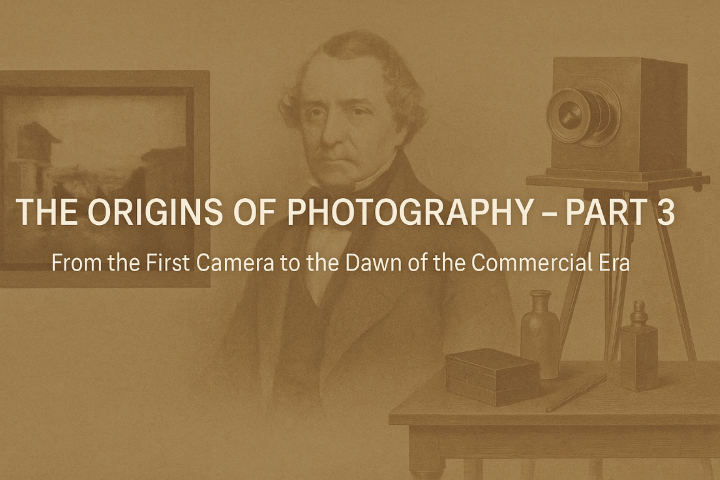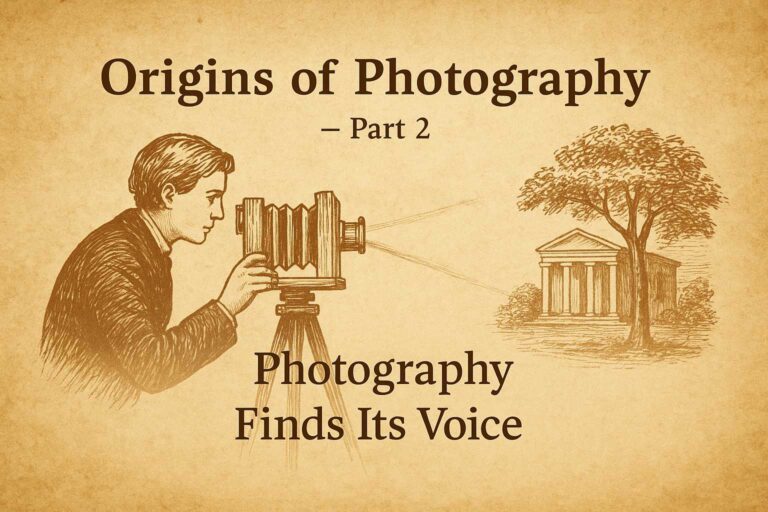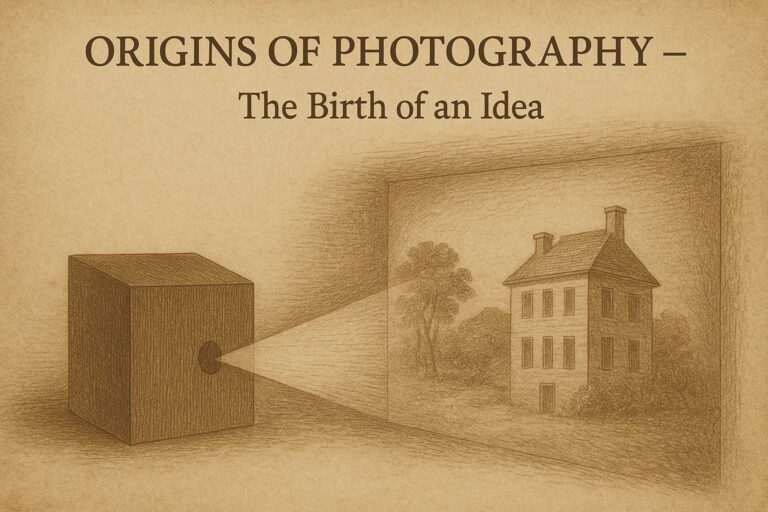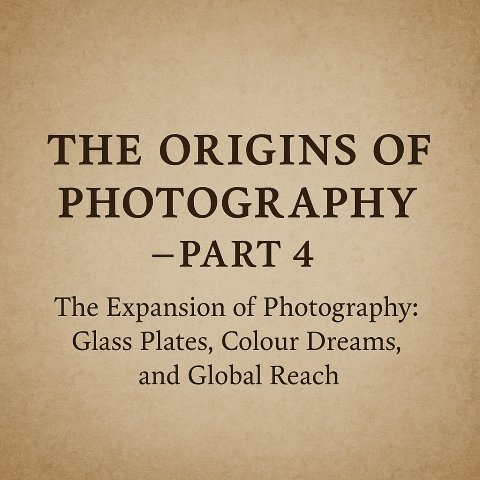The Origins of Photography – Part 3
From the First Camera to the Dawn of the Commercial Era
Introduction
In our previous chapters, we explored the early experiments that led to the discovery of light-sensitive materials and the invention of the camera obscura. Now, photography begins to take form as a permanent medium — moving from fragile impressions to lasting images. This period marks the transformation of photography from science to art, and from curiosity to commerce.
Niépce and the First Fixed Image
Nicéphore Niépce was the first to create a permanent photographic image in the 1820s. Using a pewter plate coated with bitumen, he exposed it to light through his camera for many hours. The unexposed bitumen dissolved when washed, leaving behind the world’s first permanent photograph — View from the Window at Le Gras.
His process, called heliography, was slow but groundbreaking. It demonstrated that light could not only create an image, but also fix it in time.
Mindful reflection: Imagine the patience required for such an exposure — light slowly etching its memory into metal. Each photograph we take today carries that same essence of time made visible.
Daguerre and the Birth of the Daguerreotype
Louis Daguerre, Niépce’s collaborator, refined the process into something revolutionary. In 1839, he unveiled the daguerreotype, the first practical photographic process.
A silver-plated copper sheet was exposed to iodine vapour, sensitised to light, and then developed with mercury fumes. The resulting image was unique, crisp, and mirror-like — a luminous reflection of reality itself.
Viewer’s insight: The daguerreotype was the first photograph people could hold in their hands. Looking into it was like gazing into a polished memory — your own reflection mingling with the subject’s.
Commercial portrait studios soon opened in major cities, giving ordinary people access to photography for the first time. A new era had begun: photography as both art and livelihood.
Fox Talbot and the Birth of the Negative
Across the Channel, William Henry Fox Talbot was working on a very different idea — one that would shape photography forever. His calotype process, patented in 1841, used paper coated with silver iodide to create a negative image. From that single negative, many positive prints could be made.
Unlike Daguerre’s one-of-a-kind images, Talbot’s process made photography reproducible. For the first time, light could be multiplied and shared.
Mindful reflection: Photography began to echo memory itself — not fixed in one place, but repeatable and shared, like experiences retold through time.
The Medium Matures
With both the daguerreotype and calotype, photography entered a period of refinement and innovation:
- Lenses became faster and sharper.
- Chemical sensitivity improved, shortening exposure times.
- Portable cameras and studios appeared.
These changes made photography more accessible, more expressive, and more connected to everyday life.
Meaning and Mindfulness in Early Photography
This period reminds us that photography has always been more than mechanics. It has been a dialogue between light and patience, material and meaning. Each image from this era carries a quiet sense of reverence — an awareness that capturing light is an act of both observation and presence.
Viewer’s insight: When you view these early images, pause to consider what they represent — not only invention, but human curiosity and the timeless urge to preserve what we see.
What Comes Next
In Part 4, we’ll step into the mid-1800s — exploring how photography spread beyond studios, how glass plates and albumen prints expanded the craft, and how colour began its earliest experiments.






